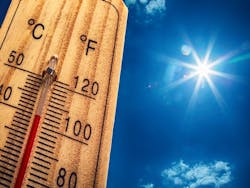How Massachusetts Compensates Battery Storage Owners for Energy Efficiency: Report
When most people think of energy efficiency, they think of using fewer electrons. But the Clean Energy Group has an expanded definition — to shift energy usage from high peaks to low demand times. And it says that battery storage is the important new technology to allow this.
The Clean Energy Group, supported by the Barr Foundation and the Merck Family Fund, says that batteries are eligible for state energy efficiency incentives in Massachusetts and that this could serve as a model for other states. The report, “Energy Storage: The New Efficiency ― How States Can Use Efficiency Funds to Support Battery Storage and Flatten Costly Demand Peaks,” explains the rational for why Massachusetts believes battery storage is cost effective.
“For every $1 you spend, you are getting back more than $1,” says the report’s author Todd Olinsky-Paul, a project director with Clean Energy Group, in an interview. “Battery storage is shifting peak demand and traditional energy efficiency is not. Peak demand is incredibly expensive.”
Battery storage is often an essential component of grid-connected microgrids, which kick on if the main grid goes down. To afford such a system, batteries must earn their keep. The Massachusetts incentive may be a harbinger of things to come. That is, customers may want to install batteries not just because they would be used as back up power or to ease peak demand usage — but also because they would be compensated.
How battery storage creates efficiency
Battery storage is economic because it can displace peaker plants, or those generation facilities built to serve high demand. Expensive, peaker plants are not used the vast majority of time, Olinsky-Paul says. They are paid to sit there, which is why having this available capacity is so inefficient. Battery storage can relieve grid pressures during such peak periods, which means that utilities do not have to procure expensive power or build new peaker plants.
Utilities, for example, can signal to homeowners or businesses that they expect high energy usage the following day at 2 pm. Those storage owners would then have the option to release electrons from their storage devices, thus saving the power companies money. With the new Massachusetts incentive, the owners of that storage get paid.
“In shifting peak, you are not necessarily reducing consumption but you are reducing costs,” says Olinsky-Paul. The batteries are charged by the grid at night when demand is low or by solar power during the day when the sun is shining. The devices are then discharged during high peak demand times. From the perspective of the grid owner, the homeowner or business is easing grid congestion.
Massachusetts program
As of January 2019, in Massachusetts, if customers install a battery, they can get paid based on how much they can reduce load. They work with their utilities to engage the battery and to provide power for their home or business. It saves utilities money because they don’t have to buy at peak. (See Order 18-110 from the Massachusetts Department of Public Utilities.)
Beyond the cost-benefit analysis, battery storage has other economic attributes that include providing resiliency, creating jobs and reducing the environmental footprint because new peaker plants don’t have to be built.
Learn more about how microgrids provide grid services by attending a featured discussion, “Beyond Islanding: The Well-Connected Microgrid,” May 15 at Microgrid 2019: Shaping the New Electric Grid.
About the Author

